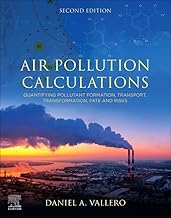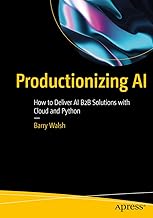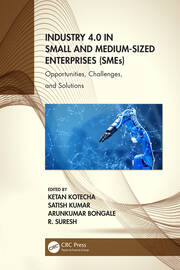
Book
Air Pollution Calculations : Quantifying Pollutant Formation, Transport, Transformation, Fate and Risks
ISBN : 9780443139871
Author : Daniel A. Vallero
Publisher : Elsevier
Year : 2024
Language : English
Type : Book
Description : Cover image Title page Table of Contents Inside Front Cover Copyright Dedication Preface Chapter 1. Introduction Abstract 1.1 What is air pollution? 1.2 A bit of history 1.3 The science of air pollution 1.4 The atmosphere 1.5 Recent trends 1.6 Spatial scale 1.7 Stressor–receptor paradigm 1.8 Calculation basics 1.9 Systems thinking and sustainability 1.10 Conclusions References Chapter 2. Characterizing air pollutants Abstract 2.1 The periodic table 2.2 Empirical calculations 2.3 Health characterization 2.4 Formation reactions 2.5 Reaction types 2.6 Pollutant formation processes: introduction to chemodynamics 2.7 Nonchemical concentrations References Chapter 3. Pollutant transformations Abstract 3.1 Introduction 3.2 The compound 3.3 Air pollution kinetics 3.4 Energy in atmospheric transformations 3.5 Atmospheric kinetics calculations 3.6 Transformation thermodynamics References Chapter 4. Environmental partitioning Abstract 4.1 Introduction 4.2 Equilibrium 4.3 What is the Ksp for cadmium fluoride? 4.4 Partitioning and transport 4.5 Integrating inherent properties and substrate characteristics 4.6 Movement from liquid to solid phase 4.7 The octanol–water coefficient 4.8 Partitioning between air and tissue 4.9 Environmental persistence 4.10 Conclusions References Chapter 5. Air partitioning Abstract 5.1 Introduction 5.2 Henry’s law revisited 5.3 Movement into the atmosphere 5.4 Interfaces 5.5 Partitioning between air and tissue 5.6 Monod equation 5.7 Phytopartitioning 5.8 Conclusions References Further reading Chapter 6. Physical transport of air pollutants Abstract 6.1 Introduction 6.2 Partitioning meets the laws of motion 6.3 Diffusion and biological processes 6.4 Partitioning, transport, and kinetics References Chapter 7. Water and the atmosphere Abstract 7.1 Introduction 7.2 The water molecule as an agent of change 7.3 The hydrosphere 7.4 Ionization, acidity, and alkalinity 7.5 Pollutant deposition from the hydrosphere 7.6 Intercompartmental exchange to and from the hydrosphere 7.7 Water, oxygen, and energy relationships 7.8 Reactions with water References Further reading Chapter 8. Air pollution biogeochemistry Abstract 8.1 Introduction 8.2 Spheres and cycles 8.3 Carbon equilibrium and cycling 8.4 Nutrient cycling 8.5 Metal and metalloid cycles 8.6 Biogeochemical cycles and decision-making References Chapter 9. Thermal reactions Abstract 9.1 Introduction 9.2 Air and combustion 9.3 Volatility of combustion products 9.4 Flue gas 9.5 Thermal pollutant destruction 9.6 Activation energy 9.7 Nitrogen and sulfur 9.8 Metals in thermal reactions References Chapter 10. Air pollution phases and flows Abstract 10.1 Introduction 10.2 Gas-phase pollutants 10.3 Air pollution fluid dynamics 10.4 Aerosols 10.5 Concentration References Chapter 11. Sampling and analysis Abstract 11.1 Introduction 11.2 Quality assurance 11.3 Data quality objectives 11.4 Sampling air pollutant emissions and releases 11.5 Ambient air pollution monitoring 11.6 Ambient air pollutant sampling 11.7 Gas- and vapor-phase measurement methods 11.8 Methods for specific pollutants 11.9 Particulate matter 11.10 Measuring gas and particulate phases together 11.11 Laboratory analysis References Further reading Chapter 12. Air pollution risk calculations Abstract 12.1 Introduction 12.2 Accountability based on risk reduction and sustainability 12.3 Defining risk 12.4 Dose–response curves 12.5 Uncertainty and factors of safety 12.6 Exposure estimation 12.7 Direct cancer risk calculations 12.8 Risk-based treatment targets 12.9 Causality References Chapter 13. Air pollution control technologies Abstract 13.1 Introduction 13.2 Particulate matter controls 13.3 Forces 13.4 Particle morphology 13.5 Mechanisms of particulate removal 13.6 Aerosol removal technologies 13.7 Removal of liquid droplets and mists 13.8 Gas-phase pollutant controls 13.9 Air pollutant treatment technologies 13.10 Removal of odors References Further reading Chapter 14. Air pollution dispersion models Abstract 14.1 Introduction 14.2 Meteorological data and graphics 14.3 Gaussian models 14.4 Stability 14.5 Eulerian models 14.6 Model levels 14.7 Model uncertainty 14.8 Links to exposure and dose models 14.9 Recent advances References Chapter 15. Economics and project management Abstract 15.1 Introduction 15.2 Emission strategies 15.3 Engineering economics 15.4 Comparing alternatives 15.5 Replacement cost analysis 15.6 Life cycle comparisons References Chapter 16. Reliability and failure Abstract 16.1 Introduction 16.2 Failure classification 16.3 Margins of safety 16.4 Success 16.5 Systems engineering References Chapter 17. Air pollution decision-making Abstract 17.1 Introduction 17.2 Data-based decision-making 17.3 Ethics 17.4 Ethical analysis of decisions and actions 17.5 Linking causes and outcomes 17.6 Analysis of complex air pollution problems References Appendix A. Key equations A.1 Atmospheric chemistry A.2 Atmospheric physics A.3 Partitioning A.4 Meteorology A.5 Biogeochemistry A.6 Air pollution engineering A.7 Geometry A.8 Statistics A.9 Air pollution risk A.10 Dispersion modeling A.11 Reliability engineering A.12 Air pollution economics Appendix B. Abbreviations and symbols Index








